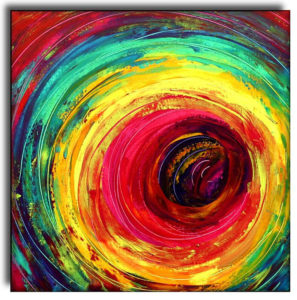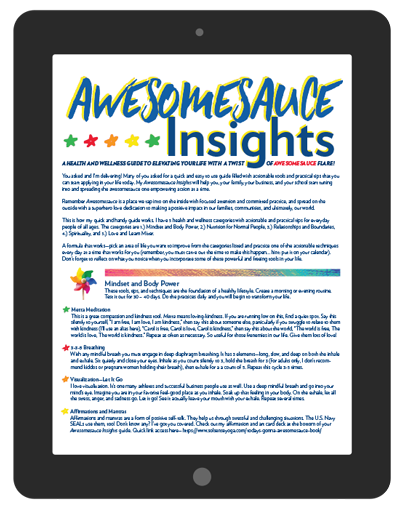
Ana Forrest, creatrix of Forrest Yoga and international pioneer in yoga and emotional healing, has a poignant phrase I often remind myself of, “Don’t Waste a Good Trigger.” If you want to do the good work, you are going to have to get down and dirty.
Two things we’re often doing in life – 1) controlling our lives so we don’t have to experience any emotional triggers or controlling our lives to clean up the after math of our explosive emotional triggers.
If we pour some yoga and meditation into the mix, we have the opportunity to heal and integrate through the tools of awareness and equanimity. When we are triggered emotionally (think overly angry, frustrated, stressed, overwhelmed, feelings of abandonment, loneliness, etc.) we will generally respond in one of three ways: flight, fight, or freeze.
When we feel threatened by people, places or things our nervous system sends fear messages to the brain and releases the chemicals adrenaline and cortisol to defend the threat and wipe out the fear, even if the fear/threat is perceived. Our nervous system doesn’t know the difference from what is real or what is perceived. This is a very important distinction to understand when connecting and building relationships with others.
Triggers are going to happen undoubtedly all of our lives. We need to learn how to work with our triggers if we desire to heal and grow spiritually. Again, as Ana says, “Don’t Waste a Good Trigger.”
Growth isn’t for the soft-hearted. We need grace and we need grit. If you want to heal your life, if you have old emotional wounds that keep cropping up in your new relationships, they aren’t going to go away with a new face or new place. Let’s try a new approach, one where we take on the trigger and practice identifying, dissolving, re-wiring, and integrating.
Identifying the Trigger
Get your white canvass out, because this one can be a colorful explosion and can make a really interesting piece of art in your life. Identifying our emotional triggers is a practice. It takes time and a committed relationship to bringing mindfulness techniques into our life. Mindfulness techniques (think a committed relationship to deep breath work here) helps us development a keen awareness in all aspects of our life, especially being able to take on the Seer mode when we’ve been emotionally triggered. What I mean by that is we are able to see the trigger for what it is and not get caught up in the trigger itself (we are able to get out of ego pain). This happens through a very hard and messy process.
We all have samskaras or impressions that are deeply imbedded in our pysches and/or our bodies. We have positive samskaras and negative samskaras. When you think of a moment that your heart is overwhelmed with love (first soul love, first baby being born, etc.), then we are experiencing a positive samskara. However, if we have experienced negative events and trauma in our life (and haven’t we all) and we think of something or see something that reminds us of the trauma and our heart beats fast, we feel overwhelmed and short of breath, then we are experiencing a negative samskara. When we experience a negative samskara, our body, breath, and heart constrict. This is when we will usually take the flight (passive aggressive actions, leave conflicts without working on them, leave yoga class when a hard pose comes up), fight (explode with anger, ego storms, negative speak), or freeze (body doesn’t move, mind is frozen, glazed look) response to the samskara. Our goal is to move away from this pattern with practice.
With mindfulness techniques, we can start the process of identifying our triggers by keeping a journal and a finding a pattern in our arguments, our hurts, our mood swings, etc., or we can enlist the help of our family and friends by gauging another point of view regarding possible triggers and their effect on us. The most important thing we can do when we think we’ve been triggered (overly angry, etc.) is to pause, breathe deeply, and don’t go numb ourselves. What I mean by numb – anything that causes us to lose a deep awareness of the situation. This could be the obvious ones of alcohol, drugs, sex to the not so obvious ones of shopping, gambling, television, etc. Instead, go into resource mode, where we breathe deeply and think about all the resources in our life that make us who we are (think family and friends here), focus on our skills and abilities (mantras), and think good, loving thoughts. This practice is very difficult. Spiritual masters commit their lives to refining these skills. Remember, it’s a practice. Give yourself room for stumbles, falls, and the occasional explosions.
Dissolving the Trigger
Identifying our triggers is a lengthy process. Some triggers may be quite obvious while others are deeply rooted in our being. It can take years sometimes to finally recognize our triggers. Once we do though, we need to begin the work of dissolving them. We start dissolving our triggers when we stop trying to control our life to not feel our triggers or to clean up the aftermath of our triggers. With a committed mindfulness practice, we become more aware of how we think and what we say, and we can start tracking our emotional triggers (samskaras) and be much more keenly aware of them before they can cause further damage to us and the people in our lives. This is where adopting a practice of keeping a journal or engaging our resources – our family and friends and/or mindful practices – for another perspective is very important. When we begin tracking our triggers, we start a pivotal process in our emotional, physical, intellectual, and spiritual development.
Re-wiring Our Brains
After we have identified the trigger and begin the even harder work of dissolving the trigger, we move into a very important healing process where we begin to re-wire our neural networks to move away from approaching, whether real or perceived, threats or fear from a mode of flight, fight or freeze, and instead to a place of stillness and equanimity. During this process we will mature in our development to pendulate from negative thoughts and feelings to positive thoughts and feelings at the times we are emotionally triggered and instead of creating more stress, overwhelm, and damage, we will seek a balanced state. When we are able to consciously be aware that we are in a negative state and can make a conscious choice to swing to a positive or more balanced state, we are practicing pedulation. When we practice pendulating, we will evolve to manage our adrenal response system in more efficient and effective ways.
When we begin identifying and work on dissolving our triggers through mindfulness techniques – resourcing, tracking, and pendulating – we are re-wiring our brains to handle stressful situations with ease and calm instead of atomic bomb wars or the silent killer, passive aggressiveness. We are re-routing the stress response system map in our body and brain, and new messages and message paths are created that foster healthy emotional and spiritual growth.
Integrating
The final stage of healing old emotional trigger wounds is integrating what we can from the hard work discussed above. We take on as much as we can from the triggered situations and integrate what we can without going into overwhelm mode again (think an out of balance adrenal response system). You mostly like won’t identify a trigger, dissolve it, re-wire your stress response structure in the body, integrate then it’s all over. In fact, it’s quite the opposite. You may identify only a piece of a trigger or samskara, and work on healing just a piece at a time. Your emotional healing journey may have you recognize some complex triggers in your life that ultimately after work on your own, may require deeper work such as psychoanalysis.
Integrating is a process. We only take on as much as the challenge as we can manage. Perhaps that means only talking about certain points in an argument because you know some points will still trigger you and will wipe out any sense of equanimity you have to discuss the other points, or perhaps it’s approaching a new situation or pose one step at time. If you are trying something new, say a yoga pose and you have a fear of going upside down, maybe work with mild inversions before going all out or if you are interested in a new subject or sport, or whatever, find a piece of the new endeavor and bite off only what you can chew, then take on a little more gradually.
No matter how much we practice lovingkindness, yoga, meditation, prayer, etc., if we aren’t utilizing our mindfulness tools and working on our emotional triggers or negative samskaras, we aren’t evolving, and if we aren’t evolving, we are dying, spiritually dying.
Working through our emotional triggers with our mindfulness tools helps guide us to find and know joy in all our imperfections and others’ imperfections as well – right here, right now – which in turn helps us deepen our compassion and equanimity towards all, and to live a full life.
If you want to dig deeper into trauma and triggers check out Healing Trauma, by Peter A. Levine, Ph.D.
Trigger me happy in love is an evolutionary process of explosive color and calm, and some more explosive color and calm in emotional healing where we begin to approach life and teach our children how to approach life with strength and light in spirit ready to dance fluidly across the canvass of the art of life.
Om Shanti Om ~ Athea


Comments on this entry are closed.
Another great blog! Love it!
Thank you, Tanya. So happy you enjoyed the piece. 🙂
I heart this. Thanks Athea…! lil Rockster rockstar!
Thank you, Larry. I”m so happy you enjoyed this piece. Light and love my friend ~ A.